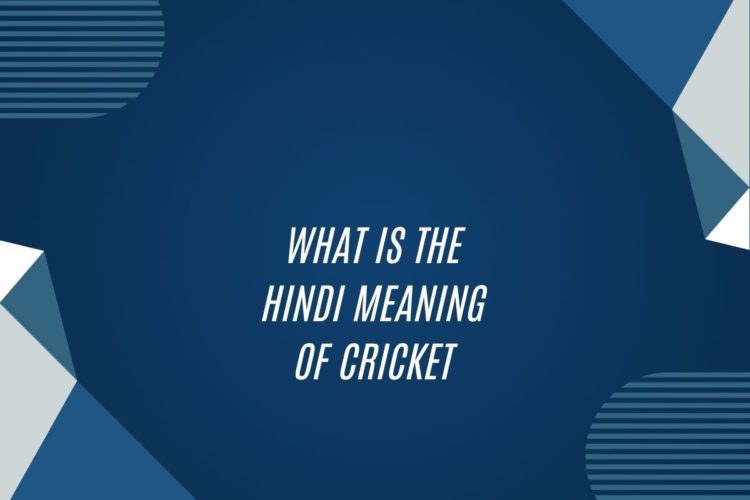The Origin of the Term “Cricket” in Hindi
Cricket, the beloved sport that has captured the hearts of millions in India, finds its roots in the British colonial era. The term “cricket” itself traces its origins to the Old French word “criquet,” which means a wooden post. This term then evolved into “cric,” which was used to refer to the sport of cricket played in England during the 16th century.
In Hindi, the term “cricket” is transliterated as क्रिकेट (krikeṭ), staying true to its English counterpart. The introduction of cricket to India by the British in the 18th century saw the term seep into the local vernacular, becoming synonymous with the sport that would go on to become a national obsession. The adaptation of the term “cricket” into Hindi reflects not only the linguistic exchange between colonial powers and their subjects but also the enduring legacy of the sport on Indian culture and identity.
Exploring the Cultural Significance of Cricket in Hindi
Cricket holds a special place in the hearts of Indians, transcending boundaries of age, gender, and social status. It is not merely a sport but a cultural phenomenon deeply embedded in the social fabric of the nation. The fervor and passion with which cricket is followed in India reflect the country’s collective spirit and unity in diversity.
The game of cricket in Hindi, known as “क्रिकेट” (kriket), resonates with people from all walks of life, serving as a common language that brings together individuals from diverse backgrounds. The players are elevated to the status of heroes, with their performances on the field shaping national pride and identity. Cricket isn’t just a series of matches; it is a celebration of resilience, teamwork, and the undying spirit of competition that echoes throughout the nation.
The Evolution of Cricket Terminology in Hindi
Cricket, once a British import to the Indian subcontinent, has deeply ingrained itself in the culture and language of Hindi speakers. The evolution of cricket terminology in Hindi is a testament to the fusion of colonial influences with indigenous traditions. Words like “chetak” for catch and “raksha” for defense have found a comfortable place in the lexicon of Hindi-speaking cricket enthusiasts.
As the game of cricket gained popularity in India, Hindi speakers embraced the English terminology with a unique twist, creating a distinct bilingual vocabulary that is a reflection of the country’s diverse linguistic heritage. Words like “sixer” becoming “chhakka” and “wicket” referred to as “wicket” have seamlessly integrated into the cricket discourse in Hindi-speaking communities. This linguistic evolution highlights the dynamic nature of language and the ability of cricket to transcend cultural boundaries.
Understanding the Role of Cricket in Indian Society
Cricket holds a special place in Indian society, transcending borders and unifying people from different backgrounds. It is not merely a game but a cultural phenomenon that captures the hearts of millions across the country. The sport has the power to bring together people of all ages, regions, and social strata, making it a crucial element of Indian identity.
Cricket in India is more than just a sport; it is a symbol of national pride and unity. The passion and fervor with which fans support their favorite teams and players exemplify the deep-rooted connection between cricket and the Indian society. From young children playing on the streets to adults glued to their televisions during matches, cricket’s influence is palpable in every corner of the country.
The Influence of Colonialism on Cricket Vocabulary in Hindi
The impact of colonialism on cricket vocabulary in Hindi is evident through the adoption of English terms within the sport. As India was once a British colony, the English language and culture significantly influenced various aspects of Indian society, including sports like cricket. Many terms related to cricket, such as “bouncer,” “bowling,” and “wicket,” have been integrated into Hindi with their English meanings intact.
The colonization period played a crucial role in shaping the vocabulary of cricket in Hindi, as the British introduced the sport to India during their rule. This led to the incorporation of English terms into the local language, reflecting the deep-rooted influence of colonialism on Indian cricket terminology. Despite India gaining independence from British rule, the remnants of colonialism can still be observed in the vocabulary used in the sport of cricket in Hindi.























